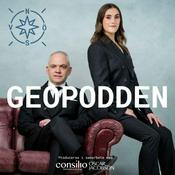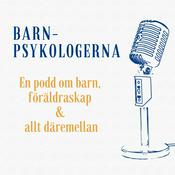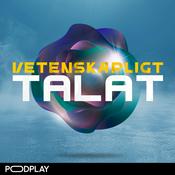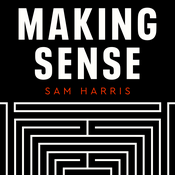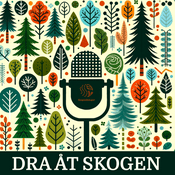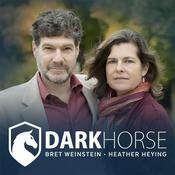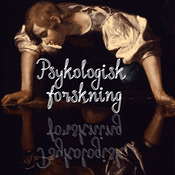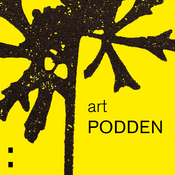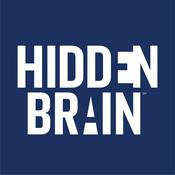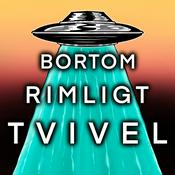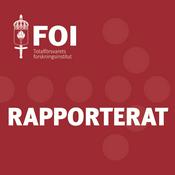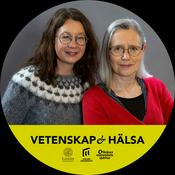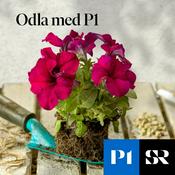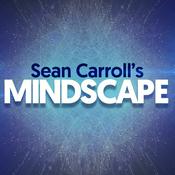Tillgängliga avsnitt
5 resultat 45
- No cold chain? No problem—inside the world of lyo-beadsApplyo Jena is building a freeze-dried future, one bead at a time. In this episode, Dr. Hanno Hermann and Dr. Thanh Tu Hellmich-Duong walk us through how their lyo-bead technology emerged from the challenges of field-based HIV diagnostics and evolved into a flexible platform that stabilizes everything from enzymes to magnetic nanoparticles, without the need for refrigeration.From diagnostics research to therapeutics, this lyophilization platform is solving key pain points in reagent formulation, shipping, and field use. Hanno and Thanh Tu explain how lyo-beads offer precise, single-use reagent doses with near-instantaneous rehydration, minimal batch-to-batch variability, and extended ambient temperature stability. Whether it's for isothermal RT-LAMP, next-gen sequencing prep, or phage-based application, Applyo’s platform unlocks new formats, simplifies logistics, and lowers the environmental burden of molecular workflows.With new hires, new markets, and new product lines on the horizon, Applyo Jena is poised for a decade of growth and maybe even a hand in reshaping the way freeze-dried pharmaceuticals are developed and delivered. Subscribe to get future episodes as they drop and if you like what you’re hearing we hope you’ll share a review or recommend the series to a colleague. Visit the Invitrogen School of Molecular Biology to access helpful molecular biology resources and educational content, and please share this resource with anyone you know working in molecular biology. For Research Use Only. Not for use in diagnostic procedures.--------33:44
- Simmer, don’t cycle—a molecular biologist’s guide to RPAIn this Mol Bio Minutes episode, Thermo Fisher Scientific’s Monika Jazdauskaitė dives into the versatile world of Recombinase Polymerase Amplification (RPA). Unlike PCR, RPA operates at a constant, low temperature (around 37–42°C), enabling fast, equipment-light workflows that are ideal for field diagnostics and decentralized labs. Monika explains how the method works and why RPA is emerging as a go-to technique for both DNA and RNA target detection.She highlights RPA’s specificity, sensitivity, and robustness against common inhibitors like ethanol and heparin, critical for applications like respiratory pathogen detection or low-quality sample inputs. Plus, she shares how RPA’s gentle conditions and lyophilization compatibility make it a strong candidate for stabilizing next-generation sequencing (NGS) libraries, especially those with high GC content.Whether you're looking to simplify pathogen detection or streamline your sequencing prep, RPA offers a compelling alternative to traditional amplification. And with ready-to-use kits like the Invitrogen™ Lyo-ready RPA Kit, Thermo Fisher is helping researchers bring speed and stability to molecular workflows, all with no thermal cycler required. Subscribe to get future episodes as they drop and if you like what you’re hearing we hope you’ll share a review or recommend the series to a colleague. Visit the Invitrogen School of Molecular Biology to access helpful molecular biology resources and educational content, and please share this resource with anyone you know working in molecular biology. For Research Use Only. Not for use in diagnostic procedures.--------12:14
- De-risking drug development using functional human tissuesIn this episode of Speaking of Mol Bio, Dr. Andre Ghetti, CEO of AnaBios, offers a deep dive into the world of translational preclinical research. AnaBios is redefining early human insights by using ethically sourced, functional human tissues and cells to generate actionable data before compounds ever enter clinical trials. Ghetti walks us through the company’s approach of offering human-relevant safety and efficacy data, validating drug targets, and supporting everything from small startups to major pharma groups.We learn how AnaBios engages with clients to customize assays, especially in high-need areas like non-opioid pain therapies, fibrosis, and cardiac safety, and how they use a blend of standardized and novel functional assays, some of which required building their own hardware. He also discusses their integration of RT-PCR, RNA-seq, and calcium imaging, including genetically encoded sensors to monitor neuronal activity at scale.From their use of machine learning to analyze massive data sets, to collaborations with the FDA, to their unique ability to preserve tissue viability across the U.S., AnaBios offers a powerful glimpse into the future of translational biology. Dr. Ghetti also shares advice for young scientists and reflects on what’s next for AnaBios, including oncology and stem-cell model integration. Subscribe to get future episodes as they drop and if you like what you’re hearing we hope you’ll share a review or recommend the series to a colleague. Visit the Invitrogen School of Molecular Biology to access helpful molecular biology resources and educational content, and please share this resource with anyone you know working in molecular biology. For Research Use Only. Not for use in diagnostic procedures.--------35:09
- No lyophilizer? No problem. Dry-Ready reagents explained.In this Mol Bio Minutes episode, Thermo Fisher Scientific's Dr. Agnė Alminaitė unveils an exciting new approach for assay developers: Dry-Ready™ reagents for RT-LAMP and RT-qPCR. These innovations eliminate the need for lyophilizers by enabling air drying of molecular assays in a standard heating oven, producing room temperature-stable assays in under two hours.Agnė walks listeners through how Dry-Ready differs from traditional Lyo-Ready™ and lyophilization methods, while delivering similar stability and performance. She explains the critical role of thermostable enzymes and specially developed excipient mixes that protect enzyme function during the drying process.The episode introduces two new kits: the Dry-Ready™ RT-LAMP Kit, ideal for flexible assay development and point-of-care settings, and the one-step Dry-Ready™ RT-qPCR Kit, a powerful tool for simplified, dual-function reactions. Both kits are customizable and empower even small labs to stabilize assays without complex equipment.Whether you're commercializing a kit or looking to simplify your workflow, this episode offers actionable insight into next-generation assay stabilization. And don't miss the special promo code below!Helpful resource links mentioned in this episode:Learn more about air-drying and lyophilization for assay stabilization.Visit the product pages for the Dry-Ready products Agnė introduced:Invitrogen Dry-Ready™ RT-qPCR KitInvitrogen Dry-Ready™ RT-LAMP KitAccess all Thermo Fisher Scientific promotional offersAccess your exclusive Speaking of Mol Bio promotional offerEnter code “CAZDUA” if in the U.S.Enter code “CZ7F19” in in Canada Subscribe to get future episodes as they drop and if you like what you’re hearing we hope you’ll share a review or recommend the series to a colleague. Visit the Invitrogen School of Molecular Biology to access helpful molecular biology resources and educational content, and please share this resource with anyone you know working in molecular biology. For Research Use Only. Not for use in diagnostic procedures.--------14:50
- Unlocking phagocytosis―a look at advanced cancer immunologyIn this inspiring episode, Dr. Felipe Gálvez-Cancino, group leader at Oxford's Center for Immuno-Oncology, walks us through his team’s groundbreaking research on macrophages, T cells, and immune regulation in solid tumors. Tracing his path from early cancer vaccine work to advanced antibody-dependent cellular phagocytosis (ADCP), Felipe shares how his team is working to reprogram tumor-associated macrophages to more efficiently eliminate cancer cells.He explains how regulatory CD4+ T cells suppress both T cell and macrophage responses within tumors and how removing that suppression can supercharge phagocytic function. We also hear how his lab is leveraging mouse models of hepatocellular carcinoma, clinical samples, and modern molecular biology techniques (like in vivo liver transfection and CRISPR-ready plasmid engineering) to study intratumor heterogeneity and antigen spreading.Felipe also reflects on the value of early molecular biology training—like mastering gigapreps—and emphasizes the importance of curiosity, persistence, and collaboration in scientific careers. Whether you’re interested in cancer biology, immunotherapy, or just passionate about translating discoveries into new therapies, this episode offers both technical depth and motivational insight. Subscribe to get future episodes as they drop and if you like what you’re hearing we hope you’ll share a review or recommend the series to a colleague. Visit the Invitrogen School of Molecular Biology to access helpful molecular biology resources and educational content, and please share this resource with anyone you know working in molecular biology. For Research Use Only. Not for use in diagnostic procedures.--------33:28
Fler podcasts i Vetenskap
Trendiga poddar i Vetenskap
Om Speaking of Mol Bio
Speaking of Mol Bio, a podcast series from Thermo Fisher Scientific, discusses trending applications in science and the molecular biology aspects of those applications. Our host delves in to deep discussion with CEOs, R&D scientists, researchers, and key opinion leaders across the globe. Speaking of Mol Bio helps scientific curious people - from all scientific and non-scientific backgrounds - understand how modern molecular biology applications can help push the boundaries in medicine, science, drug discovery, and in the cure and treatment of diseases.
Music from NOWHERE by ikson™ (https://www.iksonmusic.com)
Podcast-webbplatsLyssna på Speaking of Mol Bio, Vetenskapsradion och många andra poddar från världens alla hörn med radio.se-appen
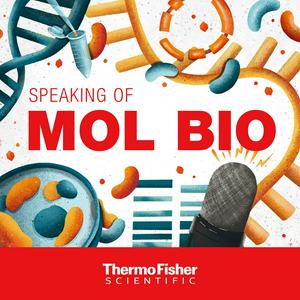
Hämta den kostnadsfria radio.se-appen
- Bokmärk stationer och podcasts
- Strömma via Wi-Fi eller Bluetooth
- Stödjer Carplay & Android Auto
- Många andra appfunktioner
Hämta den kostnadsfria radio.se-appen
- Bokmärk stationer och podcasts
- Strömma via Wi-Fi eller Bluetooth
- Stödjer Carplay & Android Auto
- Många andra appfunktioner


Speaking of Mol Bio
Skanna koden,
ladda ner appen,
börja lyssna.
ladda ner appen,
börja lyssna.

